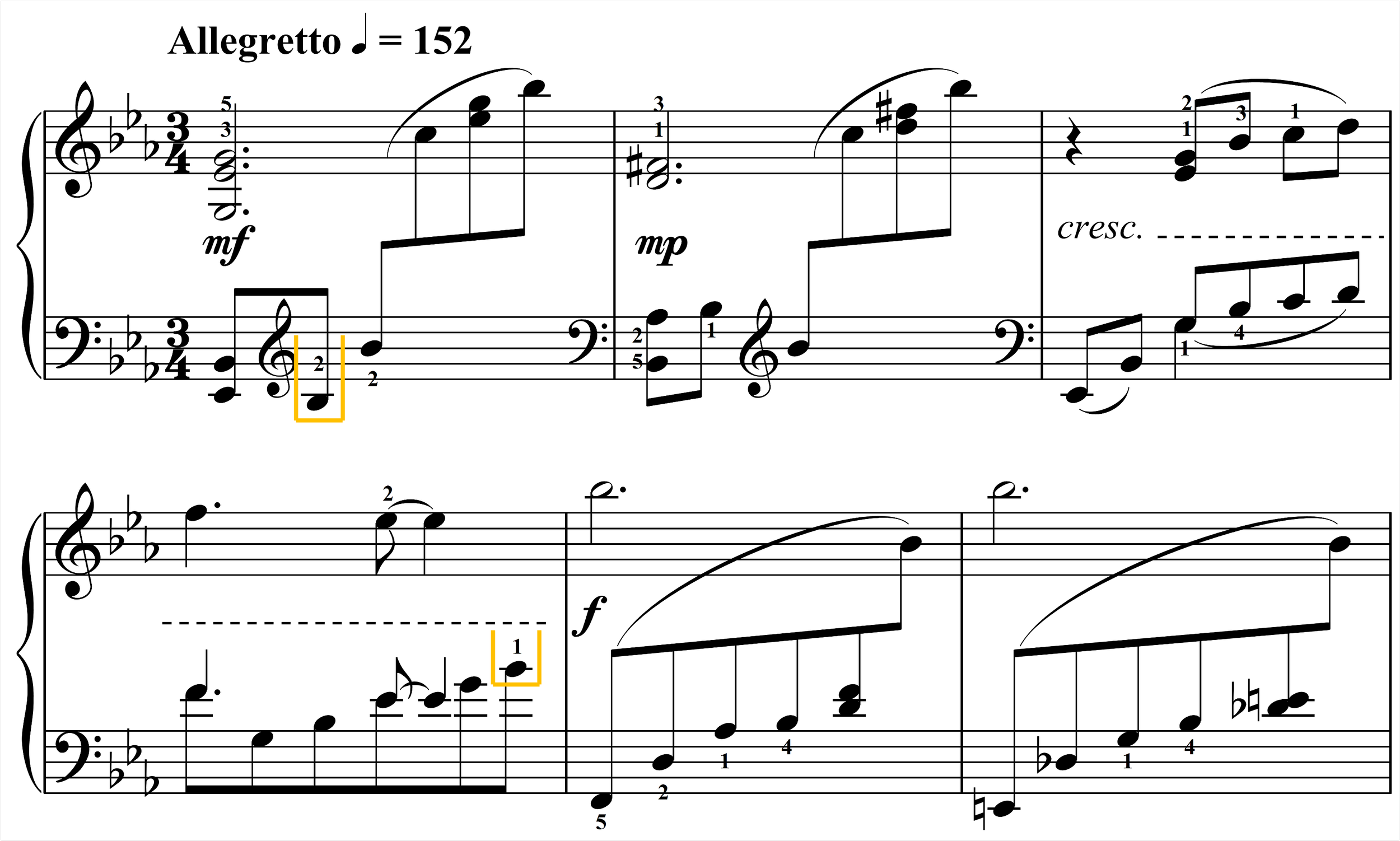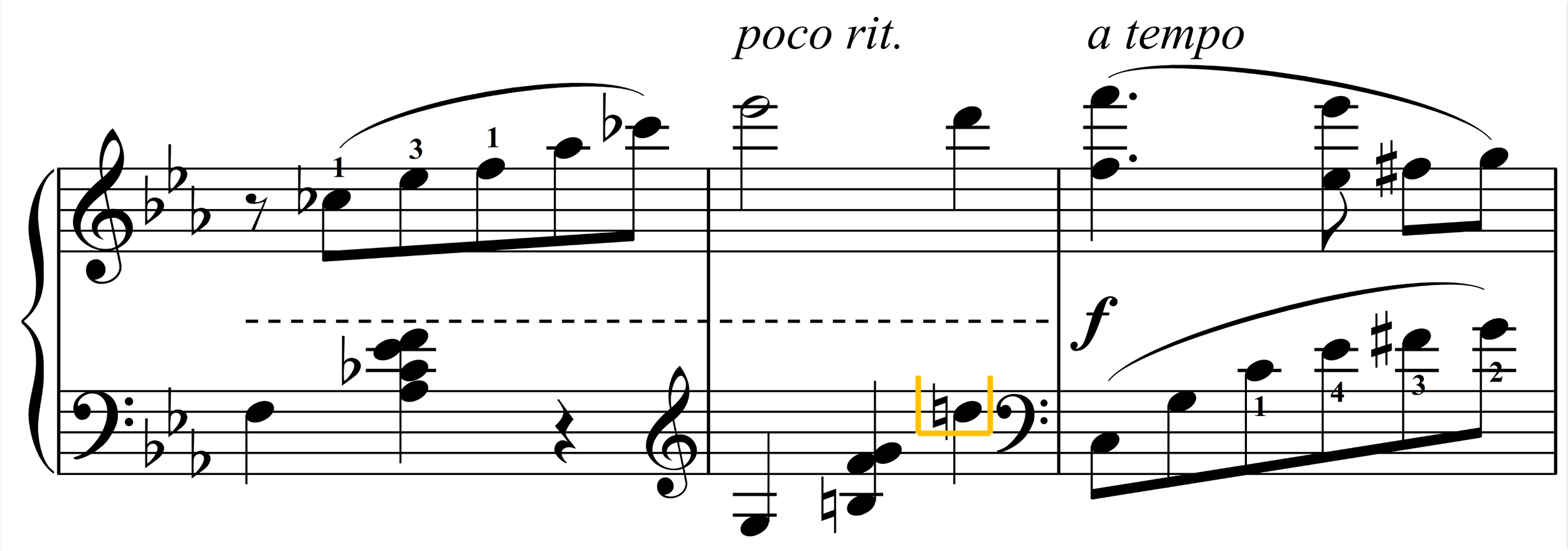“In m. 1, the lower B-flat is within the right-hand’s position, so I play it with the right hand. In m. 4, I play the last note in the lower staff in the right hand just as Price notates it in the following measures.”
“I take the Ds as an octave in the right hand to allow the left hand more time to shift positions.”
Submitted by Michael Clark
Published on 11/22/2023
“Taking the lowest note in the top staff in the left hand allows the soprano line to be sustained without the pedal.”
Submitted by Michael Clark
Published on 11/22/2023
“I redivide the notes between the hands several times in this section. The hand crossing in m. 37 is awkward as written, so I take the upper C-sharp in left hand. In m. 39, the top notes of the lower staff can be taken in the right hand, and the Cs can be taken as an octave in the left hand in m. 40.”
Submitted by Michael Clark
Published on 11/22/2023
“The F falls easily within the right hand’s position—taking it with the right hand saves the left hand from reaching quite as far across the body.”
Submitted by Michael Clark
Published on 11/22/2023
“This is a perfect time to use 1 on black keys—it simplifies the positions in both hands, eliminating extra shifts.”
Submitted by Michael Clark
Published on 1/22/2023
“Taking these notes in the left hand eliminates an extra position shift in the right hand.”
Submitted by Michael Clark
Published on 11/22/2023







